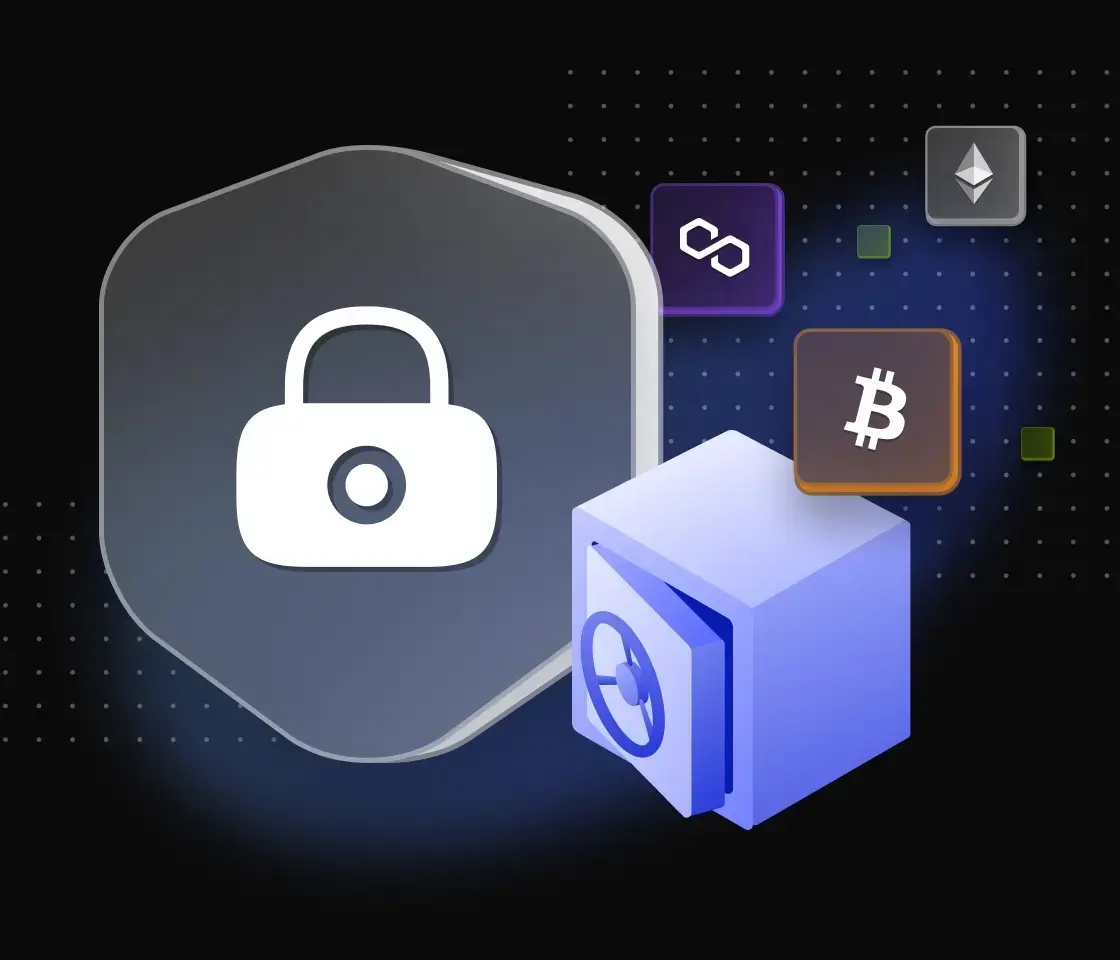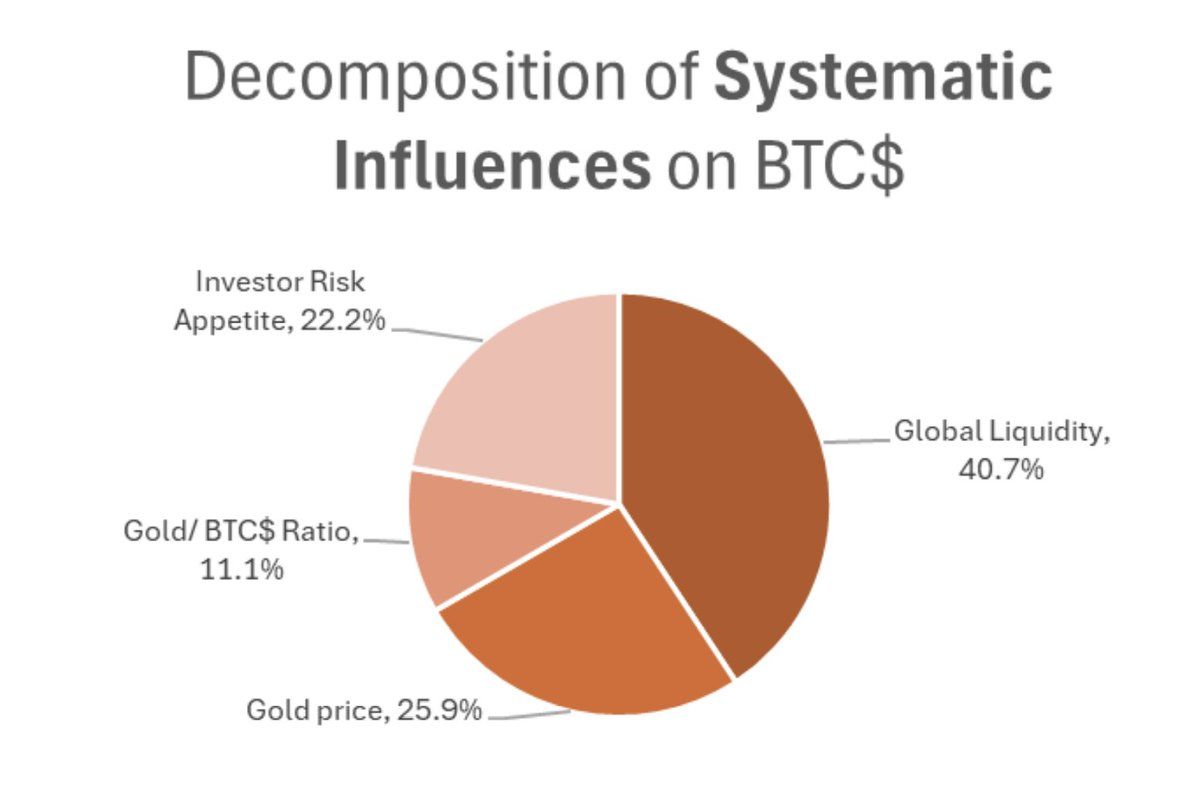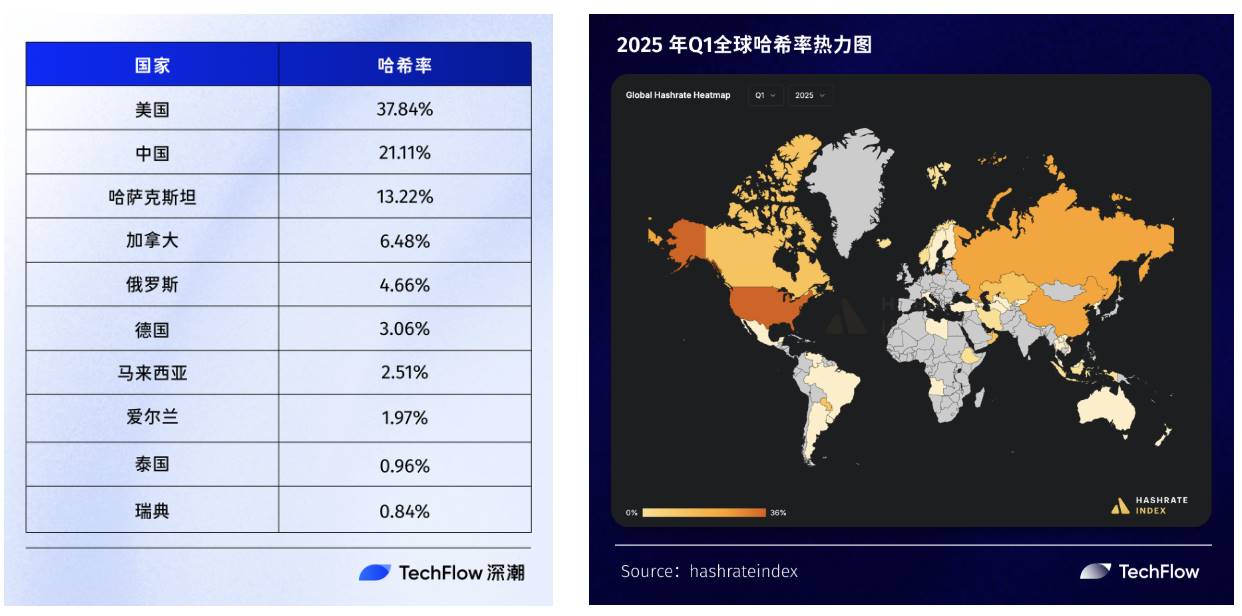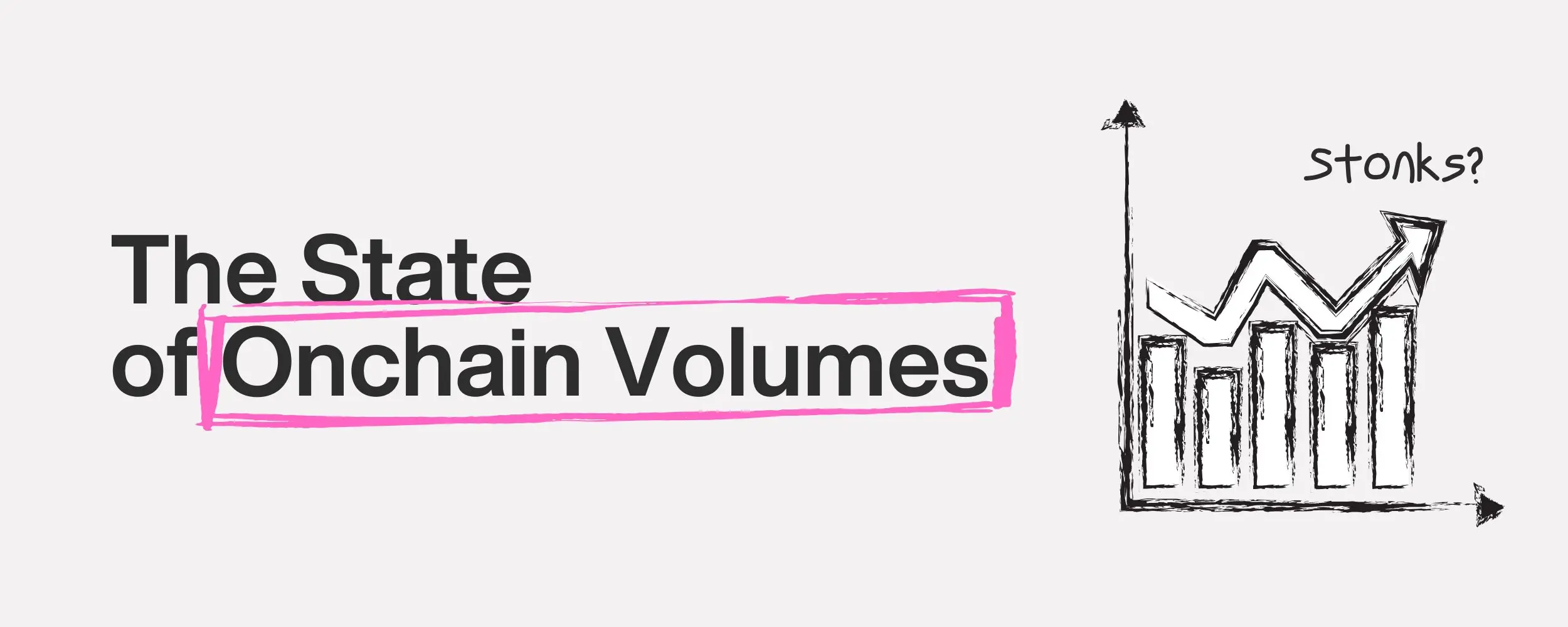GMX v2 and Its Competitors: The New Wave Disrupting the Decentralized Derivatives Market
As the cryptocurrency market matures, decentralized derivatives exchanges like GMXv2, Vertex Protocol, Hyperliquid, and Apex Protocol are gradually gaining prominence. These platforms are not only challenging GMX’s leadership position but also heralding a significant transformation in the decentralized finance (DeFi) sector. This article explores the changing competitive landscape in the decentralized derivatives market following the upgrade of GMX v2 and forecasts the major trends as we advance.
Size of the Decentralized Derivatives Market

Source: Coingecko
The above table shows the average daily trading volume for spot and derivatives of decentralized exchanges (DEX) and centralized exchanges (CEX). DEXes recorded a daily spot trading volume of $1.84 billion and a slightly lower derivatives trading volume of $1.44 billion. For CEXes, daily spot trading volume came in at $19.18 billion, and daily derivatives trading volume came in at $64.78 billion.
CEXes’ trading volume in both categories significantly dwarfs those of DEXes. This lead is most apparent in derivatives trading. Despite the FTX incident and the series of unexpected falls of centralized banks after that, it seems that CEXes are the primary choice of users after all. Additionally, CEXes have a much larger derivatives trading volume compared to spot trading volume, highlighting the popularity of their derivatives offerings.

Source: DefiLlama
GMX v2 and its Competitors
GMX v2: A Disruptive Newcomer
We analyzed how the market has evolved since the official launch of GMX v2. In the very early days, the market was still dominated by GMX v1 and dYdX, with Mux Protocol and Apex Protocol trailing far behind in Total Value Locked (TVL) and GMX v2 commanding only a minimal share of the market. As of November 5, 2023, in merely four months, GMX v2 has already equaled or even surpassed Mux Protocol and Apex Protocol in TVL (GMX v2: $89.72 million; Mux Protocol: $57.71 million; Apex Protocol: $45.51 million). Also, amid the growth of GMX v2, the TVL of GMX v1 dropped. We believe it’s because users are migrating from v1 to v2, as the latter fixes many of the flaws of v1.

Source: Dune Analytics @gmx-io
The daily trading volume of GMX v2 has grown steadily since its launch, reflecting the favorable responses from the market to the upgrade. GMX v2’s TVL growth against GMX v1 indicates that the upgrade was successful. In particular, trading efficiency was improved, and user fees were reduced. As a result, GMX v2 not only drew in new users but also won users over from GMX v1. However, it will be challenging to sustain such growth and appeal while maintaining the platform’s stability and safety. This will determine the future of GMX v2.

Source: Dune Analytics @gmx-io
From the chart above, we can see that the daily user number of GMX v2 has caught up with that of v1. However, for v2, the sources for user growth are more diversified, as it is also attracting new users, thanks to its successful marketing and user education efforts. With respect to fees, v1’s daily fee income is still higher than that of v2, reflecting their different fee structures. The user growth reflects the market’s recognition of GMX v2’s improved user experience and trading efficiency. How to convert new users into long-term users will be a top question for GMX v2. We believe GMX v2 should give priority to the continuous improvement of user experience and community engagement to solidify its market position.
The fee structure of GMX v2 has been adjusted to balance short and long positions and improve capital efficiency. Major adjustments include:
-
Reducing Open/Close Fees: The original 0.1% fee rate for opening and closing positions has been lowered to 0.05% or 0.07%, depending on whether the trade increases the balance of longs and shorts. If it does, the lower fee is applied. Otherwise, the fee would be 0.07%.
-
The Introduction of Funding Fees: In the balance of power between longs and shorts, the stronger side pays funding fees to the weaker side. This funding rate is not fixed but gradually adjusts over time based on the long and short ratio. For example, if the total long open interest is larger than the short open interest, then the funding rate that longs pay shorts will gradually increase until the difference between the long and short open interest is below a certain threshold or an upper limit is reached, at which time the funding rate will remain constant, and vice versa. Such an adaptive rate mechanism helps to increase arbitrage opportunities, attract arbitrage capital, and thereby promote a balance of market forces.
In summary, we believe that a top challenge for GMX v2 is to sustain growth while ensuring the platform’s stability and growth. In the DeFi space, security incidents are frequent. GMX v2 must ensure such risks do not impact it. Another challenge is how to maintain its edge in a competitive market, especially in the face of competition from new protocols. GMX v2 needs to continue innovating to maintain the attractiveness of its products and services. Ultimately, the success of GMX v2 will depend on how it balances growth with stability and innovation with security.

Source: DefiLlama
Meanwhile, we compared the top 15 derivatives protocols’ monthly TVL changes as of November 6, 2023. The TVL growths of GMX and dYdX look mundane when compared with dark horses like Vertex Protocol, Hyperliquid, and Apex Protocol, which enjoyed 63.22%, 30.69%, and 25.49% growth in their TVL, respectively. We’ll examine them one by one in the following paragraphs to find out the impetuses and narratives driving their growth.
Vertex Protocol: Gaining Competitive Advantage through Low-Cost Operations
Vertex Protocol is a decentralized exchange featuring spot, perpetual, and integrated money markets. The protocol uniquely combines a centralized limit order book (CLOB) with an automated market maker (AMM) to enhance liquidity and transform the user trading experience.
Built on the Arbitrum Layer 2 (L2) to reduce gas fees and combat Miner Extractable Value (MEV), Vertex Protocol facilitates efficient and cost-effective transactions in the decentralized space. The protocol comprises three key pillars: an off-chain sequencer, an on-chain AMM, and a robust on-chain risk engine. The order book and AMM collectively accumulate liquidity from API market makers and on-chain contributors. The risk engine ensures swift liquidation, while the dual liquidity sources enable traders to obtain better prices. The growing trading volume on Vertex attests to the success of this unique model.
Vertex Protocol’s cross-margin system makes it user-friendly for experienced and novice traders, significantly lowering margin requirements. For example, a Vertex trader with a long position in spot margin $ETH and a short position in $ETH perpetual contracts may have a lower cumulative margin requirement than a trader with the same position in isolated margin accounts. By introducing the concept of portfolio margin, the system enables traders to adjust the leverage of their positions across multiple positions to suit their individual risk preferences. If the value of the long $ETH spot margin position falls, the excess margin (e.g., unrealized profits) in the short $ETH perp position may be used to maintain the required margin level, avoiding liquidation of the long spot margin position. Vertex’s approach maximizes capital efficiency.
Project Performance

As shown in the chart above, Vertex Protocol’s TVL and derivatives trading volume have exhibited a stable upward trend since its inception.
Total Locked Value
While Vertex offers an innovative trading experience, its TVL still significantly lags that of GMX. This is mainly because its money market feature is still quite underdeveloped. It only supports the lending and borrowing of 5 major assets, including wBTC, wETC, and USDC. This limits its ability to draw in more locked value. Additionally, as of the time of writing, its native token, VRTX, hasn’t been launched yet. This means users can not stake VRTX to participate in the protocol.


Derivatives Volume
In the highly competitive DEX sector, Vertex Protocol has captured a significant portion of daily trading volume, ranging from 15% to 30%. This outstanding performance stands out even compared to industry giants like GMX, Gains, and Kwenta. Especially when compared to GMX, Vertex’s trading volume is notably higher. As an emerging project, the fact that it has surpassed incumbent players in trading volume in such a short time demonstrated the appeal of its unique design to users.


Fees and Revenue

GMX’s Fees; Source: DefiLlama

Vertex Protocol’s Fees; Source: DefiLlama
GMX charges higher transaction fees than Vertex. Vertex Protocol implements a zero-fee policy for makers and offers very low fees for takers on major trading pairs (2 basis points for stablecoin pairs, 2–3 basis points for core markets, and four basis points for non-core markets). In contrast, GMX v1 charges 0.1% for opening and closing positions (reduced to 0.05% or 0.07% in v2) and additional fees ranging from 0.2% to 0.8% if there are exchanges involved in the trade. This fee structure advantage makes Vertex Protocol more attractive to users, although its lower fee rates may lead to less significant revenue growth compared to trading volume growth.
We believe Vertex Protocol has rapidly established itself in the market by offering a highly competitive, low-fee structure. This low-fee strategy has attracted a substantial number of cost-conscious traders, especially as users pay increasing attention to trading costs in the current market conditions. However, in the long term, this strategy may face profitability challenges, particularly in maintaining high-quality services and platform operations.
Therefore, Vertex Protocol needs to explore additional value-added services and revenue models while continuing to attract users with low fees to ensure long-term sustainability. Although GMX’s daily transaction fees were significantly higher before, they have recently dropped to around $100K, about the same level as Vertex Protocol. Combined with Vertex Protocol’s steadily growing trading volume, it is expected that its future revenue has the potential to surpass that of GMX.
Hyperliquid: A Fully On-Chain Orderbook DEX on its Own L1
Hyperliquid is an orderbook-based perpetual futures decentralized exchange. It runs on the Hyperliquid chain, a Layer1 built on Tendermint. A key reason for Hyperliquid’s rapid growth is that it exists on its own Layer1. This enables the Hyperliquid team to flexibly adjust gas fees, MEV, slippage, and more to achieve the fastest and most efficient trading experience, so much so that the platform can support up to 20,000 orders per second.
Running on its own Layer1 also enables it to build a fully on-chain orderbook with full transparency of every executed transaction, which is much needed in the post-FTX incident market. Hyperliquid L1 makes it possible to build everything as on-chain, decentralized, trustless, and permissionless as possible.

On Hyperliquid, Vaults provides liquidity to various trading strategies. They can be managed by an individual trader or automated by a market maker. Anyone can deposit into a vault to earn a share of the profits: DAOs, protocols, institutions, or individuals. In exchange, the vault owner receives 10% of the total profits.
Hyperliquid was also the first one to launch an index perpetual contract for Friend.tech. Originally this was based on TVL, but it was changed to the median price of a static set of 20 top subjects after it became clear the TVL definition could be manipulated, given the growing OI.
Project Performance

Like Vertex, the protocol’s TVL has also been steadily increasing since launch, with monthly derivatives trading volumes at around $1.5 billion after peaking at $8 billion. However, on average, Vertex Protocol still maintains a competitive edge.
Total Locked Value

Hyperliquid is still not on par with GMX in terms of TVL. But when compared with Vertex Protocol, which was launched around the same time, Hyperliquid’s TVL only falls slightly behind, with the exception of September when it exceeded that of Vertex. We believe its lower TVL is primarily due to the limitations of its staking and deposit features. The project primarily locks funds through Vaults, where people deposit capital to Vaults for profit sharing. However, this copy trading approach involves inherent risks, as profit and loss depend entirely on the trading skills of the Vault owner. Therefore, such features provide insufficient assurance to investors and are thus less attractive.


For example, the above figure shows the performance of Hyperliquidity Provider (HLP), a protocol vault that does market making and liquidations and receives a portion of trading fees. We can see a negative return on investment (-2.41%) and a continuous decline in the profit-loss ratio, suggesting that there may be better choices than depositing funds into Vaults for users.
Derivatives Volume

Source: Dune Analytic @shogun, as of Nov 5, 2023
Hyperliquid commands a market share of approximately 6%. Although incomparable to Vertex Protocol, it’s still an impressive percentage for a new protocol. However, the trading volume has declined in the past month, failing to sustain previous levels of activity.
Fees and Revenue
Hyperliquid’s fee structure is as follows:
-
Takers pay a fixed fee of 2.5 basis points, while makers receive a rebate of 0.2 basis points. Referrers receive 10% (0.25 basis points) of referred users’ taker fees. The remaining fee income (approximately 2.05 basis points) goes to the insurance fund and HLP.
-
In contrast to Vertex, where the team or internal token holders take the largest part of the fees, in Hyperliquid, fees are directly distributed to the community: 40% goes to the insurance fund, and 60% goes to HLP.

Hyperliquid’s fee structure emphasizes giving back to the community. In comparison, Vertex Protocol offers zero fees for makers and very low fees for takers on major trading pairs. It uses a portion of the trading fees to support its Vaults and liquidity providers. This difference demonstrates Hyperliquid’s inclination to reward community members who directly support network operation and risk management.
ApeX Protocol: A Multichain DEX Powered by ZK Rollups
Built on StarkWare’s Layer 2 scalability engine StarkEx and operating on an orderbook model, Apex Pro, ApeX Protocol’s newest product offering, delivers cross-margined perpetual contracts with a secure, efficient, and user-friendly user experience. It is non-custodial, meaning that traders’ assets are entirely on-chain and accessed only by them with private keys. Utilizing a zero-knowledge rollup scaling solution helps Apex improve the security of transactions and protect users’ privacy. It offers more favorable trading fees than similar products like dYdX and GMX. Its staking and repurchase reward mechanism and referral program also increase its appeal.
Key appealing points of ApeX’s staking program include:
-
There are no fixed terms or plans. Users can start and unstake at any time, with longer staking periods yielding greater returns.
-
Staking rewards consider not just your staked assets but also your trading activity, factoring in the Trade-to-Earn (T2E) activity score for additional earnings.
Project Performance

Apex Protocol’s TVL has also been on a steady rise. Its monthly derivative trading volume is stabilizing at approximately 1.7 billion, similar to the first two protocols.
Total Locked Value

Apex Protocol’s TVL is significantly higher than the first two. Its two yield-generating features, Smart Liquidity Pool and Apex’s staking pool, are the major contributors to its high TVL. Past participation has been enthusiastic. The staking pool’s annual percentage yield (APY) reaches 56.31%, while the Smart Liquidity Pool also offers an attractive 7-day yield of 13.03% for users who provide liquidity to its market-making strategies.

Derivatives Volume

Source: DefiLlama
Compared to the other two protocols, Apex Protocol exhibits a more stable growth trajectory in trading volume, indicating a steadily growing userbase and user participation.
Fees and Revenue

Apex has a similar growth trend in trading fees to Vertex. We believe both Hyperliquid and Apex Protocol have established their market positions by focusing on niche market segments and user groups, which allows them to more efficiently meet these markets’ unique needs. Hyperliquid made its name with its innovative fully on-chain orderbook, while Apex Protocol gained recognition through its multichain support and efficient trading execution.
Overall Comparison
Based on available data, we’ve scored all four protocols (GMX v2, Vertex Protocol, Hyperliquid, and ApeX Protocol) in terms of TVL, trade volumes, user growth, fee structures, user demographics, and more to present a holistic comparison of their overall strengths and risk resilience. The graph below shows some of the results.

Source: Bing Ventures
As the incumbent market leader, GMX v2 scores high in several metrics, especially TVL and trading volumes. It also performs well in terms of innovation capabilities, user experience, and community engagement. However, regulatory compliance might be an area that it can work on.
Vertex has a prominent lead in fee structure, which is its core competitiveness. Despite slightly lower TVL and trading volumes compared to GMX v2, it boasts great potential for user growth and community engagement.
As a newer platform, Hyperliquid scores lower in all metrics, reflecting the challenges faced by emerging platforms. However, it has the potential to catch up in security and user experience.
ApeX’s scores are similar to Vertex’s in several metrics. However, it slightly exceeds Vertex in user experience and community engagement.
Future Trends in the Decentralized Derivatives Market
In summary, GMX’s position in the decentralized derivatives exchange market is indeed being challenged by emerging protocols, especially Vertex Protocol. With its advantages in fee structures, Vertex has already started to capture more market share. This competitive landscape underscores that even in this relatively mature market, innovation and user-friendly pricing strategies remain effective means of attracting users and increasing market share.
In terms of TVL, the emerging projects are still not on par with GMX. This reflects users’ remaining cautious about depositing large amounts of assets to new platforms. This phenomenon may be caused by users’ lack of trust in new platforms, their underdeveloped product features, or their lack of market awareness. Therefore, for these emerging protocols, attracting user funds and increasing TVL will be a significant challenge.
In addition to market competition, the development of these protocols will also be influenced by factors such as market demand, technological advancements, and regulatory environments. The ten trends below will shape the future of the decentralized derivatives market, and it will be crucial for existing and new players in the market to be aware of and adapt to these trends.
-
A Market Restructuring The decentralized derivatives market is undergoing a significant restructuring due to changes in user needs. People are not only expecting more functionalities but also have an increasingly higher demand for user experience, capital efficiency, and transparency. This restructuring will lead to incumbent market leaders being replaced by new players who are more flexible and innovative in meeting such user needs.
-
Accelerated Technological Innovation Technological innovation is at the core of new entrants’ development. We anticipate more innovative trading mechanisms, such as more efficient liquidity pools and improved risk management tools, that address the unique challenges of crypto markets’ high volatility and unstable liquidity. Smart contracts will also be optimized in terms of security and the ability to enable more complex and efficient financial strategies. Continuous technological innovation will be crucial for platforms to remain competitive.
-
Cross-Chain Trading As the crypto market matures, users increasingly demand seamless transactions across different blockchains. The development of cross-chain functionality enhances asset liquidity and provides users with a broader range of trading opportunities. We predict that platforms supporting multi-chain operations will gain a competitive edge due to their enhanced interoperability.
-
Increased Requirements for Regulatory Adaptability As the global regulatory landscape evolves, platforms that can adapt flexibly while maintaining decentralization will have an advantage. This means platforms must not only focus on technological development but also closely monitor international regulatory dynamics and adjust their operations to comply with legal requirements in different regions. Regulatory adaptability will be a crucial criterion for distinguishing platforms in the future.
-
Fundamentally Improved User Experience User experience will be a key factor in differentiating platforms. As the user base of decentralized finance grows, simplifying user interfaces and trading processes and reducing technical barriers will be essential to attract a broad user base. This is not just a matter of interface design but a rethink of the entire trading process. How to provide a user experience comparable to or better than centralized exchanges while maintaining decentralization should be a priority for all platforms.
-
Smart Contract Security Smart contracts are the cornerstone of decentralized finance, and their security directly impacts the platform’s reputation and asset security. Enhancing smart contract security through methods such as more rigorous code audits and bug bounty programs will be essential to building user trust and preventing fund losses.
-
Enhanced Capital Efficiency with Innovative Financial Instruments Decentralized platforms face significant challenges in capital efficiency. While there are a range of mature tools and strategies in the traditional financial market to enhance capital efficiency, there is still a large room for development in the crypto market. Future decentralized platforms will focus on innovative financial instruments and complex trading strategies, which will test market players’ market understanding and financial innovation capabilities.
-
Decentralized Governance Decentralized governance is a core feature of blockchain technology. Effective community participation and transparent decision-making processes will enhance platform credibility and user engagement. To achieve true decentralization, we anticipate future platforms putting more emphasis on community input and making community engagement a vital part of the decision-making process.
-
Diversified Synthetic Assets and Derivatives Offerings As the market matures, there will be a growing demand for diversified investment tools. Synthetic assets and various types of derivatives will be key to meeting this demand. Future decentralized platforms will offer a wider range of derivatives, including options, futures, and various composite financial products. These diversified product offerings will attract a broader investor base and enhance market depth and liquidity.
-
New Liquidity Mining and Incentive Mechanisms To attract and retain users, new liquidity mining and incentive mechanisms may be created and implemented. These mechanisms should be able to attract user participation and sustain user activity over the long term. We anticipate various new incentive mechanisms to emerge, including both token rewards and diversified long-term incentives, to nurture user loyalty and boost engagement.
About Bing Ventures
With a team of veteran financial professionals, researchers, and technologists, Bing Ventures is a pioneering venture capital firm that backs startups and entrepreneurs driving the next wave of Web3 and blockchain innovations.
免责声明:文章中的所有内容仅代表作者的观点,与本平台无关。用户不应以本文作为投资决策的参考。
你也可能喜欢




